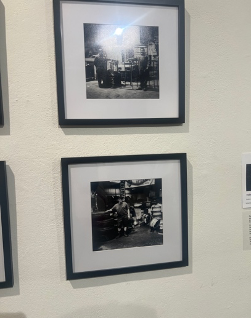Activism has expanded from organized protests and revolts and transformed into artistic thought created to capture the audience. “What is Curatorial Activism,” written by Maura Riley, addresses how curators are actively designating their art exhibits to counter the status quo, or “counter-hegemonic initiatives” (Riley, p.14). Maura Riley explains that curatorial activism’s purpose is for curators to have “committed themselves to insurrectionist initiatives that are leveling hierarchies, challenging assumptions, countering erasure, promoting the margins over the center, the minority over the majority, as well as positing curatorial “strategies of resistance,” provoking intelligent debate, disseminating new knowledge, which, in the end, offers up signs of hope and affirmation,” (Riley, p2). This Is What I Know About Art, by Kimberly Drew, represents Drew’s realization that the art field has disproportionate opportunities for male white artists compared to people of color, shown through the “lack of diversity” within creative fields. When Drew realized the threat to black art, she began her curatorial activism journey by beginning her Tumblr blog. Kimberly Drew’s pivotal moment in “This is What I Know About Art” occurred when the Whitney Biennial released the artists who defined “art now,” only 9 out of 103 artists were black. While this stung, the “curatorial committee invited the white male artist Joe Scanlan to be in the biennial under the pseudonym of Donelle Woolford, a fictional Black woman artist brought to life by Black women actresses on Joe’s payroll. There is significant literature available that painstakingly explains this work as a continuation of the minstrel show tradition, the racist performance of blackface which lampoons Black life for white audiences” (Drew, pg. 29). This event represented how even though these experiences are those of ancestors of African American people, white men are still appropriating and using it to their advantage. Utilizing her reach to other black artists, she “had to resist the erasure of Black artists.” (Drew, p. 17). Kimberly Drew’s social media presence and Tumblr blog encapsulate Maura Riley’s idea of curatorial activism because her blog “function[s] as curatorial correctives to the exclusion of Other artists from either the master narratives of art history or from the contemporary art scene itself.” Riley explains how the use of the blog and her actions as a curator is aimed to go against what is mainstream and promote the diversity and inclusion of artwork created by “work produced by women, artists of color, non-Europeans or queer artists” (Riley, pg. 14).
Natali Bravo-Barbee is a curator who creates works that connect the media of photography and installation sculpture. Although Bravo-Barbee documents the world through her lens, she has also worked behind-the-scenes curating.
Bravo-Barbee officially debuted her exhibition, Lente Latine, or Latin Lens. The gallery's purpose was to shed light on the works of Latin American Photographers on the East Coast. Through the exhibition and the selected artworks of each photographer, she hoped to focus on their background and cultural identity. Maura Riley shows that curation, such as Latin Lens and its focus on the culture of Latinx, shows how curation can actively “resist masculinism and sexism, confront white privilege and Western-centrism, and challenge hetero-centrism and lesbo-homophobia.” In the Latin Lens curator statement, Natali Bravo Barbee states, “It was important that I showcase various vantage points of what it means to have Sangre Latina. While the History of our people has been written in blood by white-washed Spain and Portugal, what remains alive and unites us all.” Natali Bravo-Barbee actively shows curatorial activism because although these artists vary in their photographic abilities and preferred techniques, she collected all of them based on their Hispanic background and centered experiences. Barbee utilized activism and incorporated the changes she wanted to see in other curator exhibitions within the art world. Latin Lens shows how it purposely is trying to improve the current Art field as it answers, “Who is behind the Camera, and what camera are they using?” Barbee utilizes biographies and the artist’s purpose for their pieces aside from their artwork to feed the audience’s information.
Label of Jacqueline Herranz Brooks Created by Curator
Working Class New York
Sholette, G. (2021). Art Of Activism And The Activism Of Art. Lund Humphries Publishers.
Reilly, Maura. TOWARD a CURATORIAL ACTIVISM. www.maurareilly.com/pdf/essays/CIAFessay.pdf.
Reilly, M. (2017, November 7). What Is Curatorial Activism? ARTnews.com. https://www.artnews.com/art-news/news/what-is-curatorial-activism-9271/
Drew, K. (2020). This is what I know about art. Penguin Workshop.





No comments:
Post a Comment